Week 1 – Anti-inflammatory foods to calm skin redness
We often focus on which foods are ‘bad’ for our skin, and often neglect all the vitamins, minerals and other beneficial compounds in foods which our skin needs to thrive. We will be starting off this 8-week programme by filling your plates with colourful antioxidants and anti-inflammatory herbs and spices.
Dark pigments in fruits and vegetables
Antioxidants are present mostly in brightly coloured fruits and vegetables, so getting a rainbow of colour is a sure way to know that you are getting a good range.
Not only are antioxidants anti-inflammatory, they also help to speed up the healing process, can control the regulation of skin cell turnover and are required at much higher levels in skin conditions where oxidative stress is high such as psoriasis, or where infections may be aggravating the skin.
Dark purple fruits and vegetables are especially beneficial when it comes to calming skin redness, as flavanoids including anthocyanins (purple pigment) are extremely powerful antioxidants. Foods particularly high in anthocyanins include blackberries, blueberries, raspberries, strawberries, cherries, cranberries, red currants, grapes, plums, black beans and aubergine.
Berries are also part of the ‘SIRT food’ family, which are foods (also including wine, green tea and dark chocolate!) that activate proteins called sirtuins, which help reduce inflammation in the body and as an added bonus also has anti-ageing effects on the skin.
Other pigments exist of a similar colour too, including lycopene in tomatoes and betacyanins in beetroot. They all appear to have anti-inflammatory and healing effects on the skin, but anthocyanins (purple / red / blue) are the winners!
Challenge 1:
Challenge 1 – Have a fruit or vegetable every day which is dark purple / blue / red in colour
- Try a handful of berries with breakfast (e.g. raspberries, blueberries & strawberries)
- Have a fruit snack (e.g. red grapes, plums, figs, pomegranate) with a handful of nuts
- Add radishes and beetroot to a salad
- Cook dinner with tomatoes, red peppers and aubergine
Anti-inflammatory herbs & spices
If you’ve cut out a lot of foods over time to try and find trigger foods for your skin, you may find your diet can be quite restrictive and bland at time. An easy way to ‘spice it up’ is to literally add spices or herbs to your meals which as a bonus have anti-inflammatory properties.
Of course, spice may aggravate your skin if you have a condition such as rosacea, so go easy on the chilli if this is the case for you, but otherwise there are plenty of herbs and spices that can be added to dishes to enhance the flavour and health benefits.
Get in the habit of regularly adding herbs and spices to your meals, even if as simple as an Italian herb mix to go in vegetable dishes.
Challenge 2:
Challenge 2 – Choose 3 of your favourite anti-inflammatory herbs and spices
- Stock your cupboards with dried herbs and spices which have not expired, to ensure they still contain anti-inflammatory properties
- Cook with the herbs and spices, either together in a meal (e.g. curry or a stir-fry) or on their own (e.g. cinnamon in porridge)
- Some examples: turmeric, ginger, cinnamon, garlic, chilli, cloves, rosemary
- You could even buy fresh herbs too such as thyme and sage
Recipes for week 1

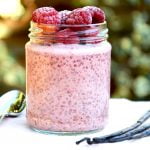
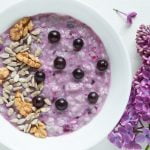
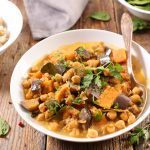





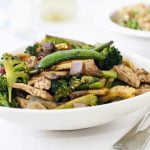
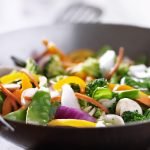

Top recipe of the week
Raspberry chia seed pudding
Ingredients
- 2 handfuls raspberries
- 2 tbsp Greek yoghurt / coconut yoghurt
- 100 ml coconut milk (e.g. 'Rude Health' in carton)
- 1 vanilla pod (or 1/2 tsp vanilla extract)
- 3 tbsp chia seeds
- 1 tbsp desiccated coconut
Instructions
- Mash half of the raspberries with a fork.
- In a jar or bowl, mix the mashed raspberries with the yoghurt and coconut milk.
- Using a sharp knife, cut the vanilla pod lengthways and scrape out the small black vanilla seeds inside.
- Add the vanilla seeds, chia seeds and desiccated coconut and stir well.
- Leave to soak overnight for best results (or at least for 1 hour).
- Top with the remaining raspberries.
